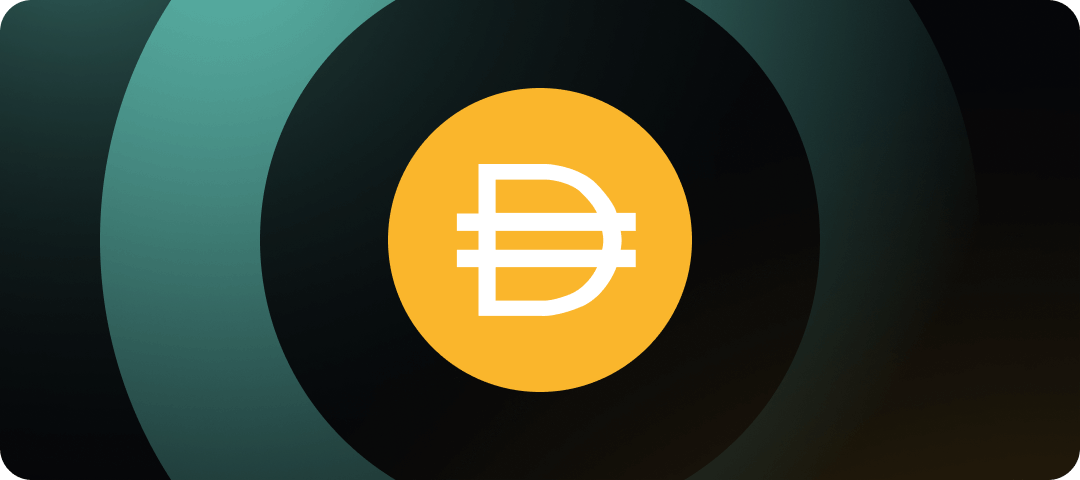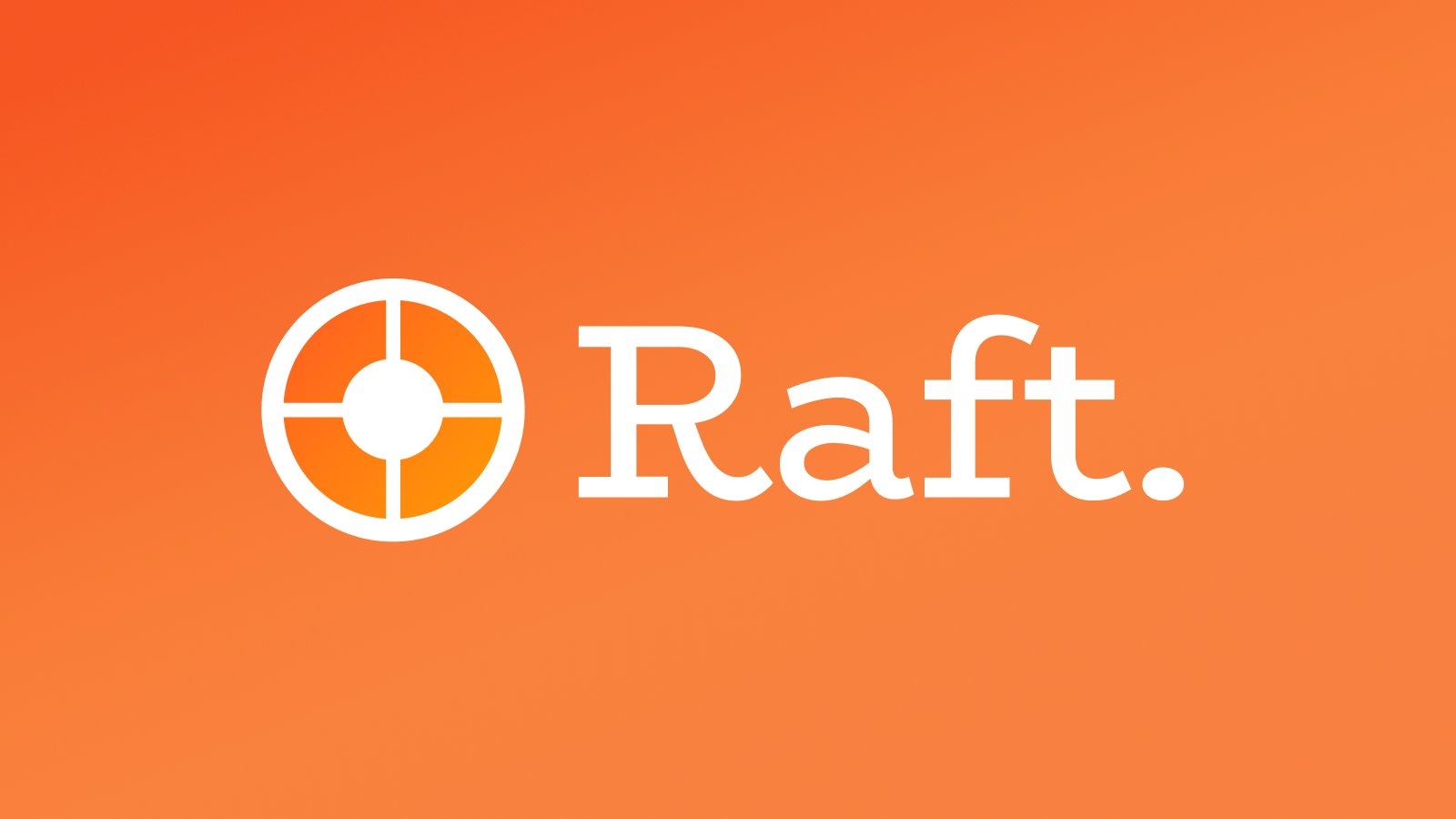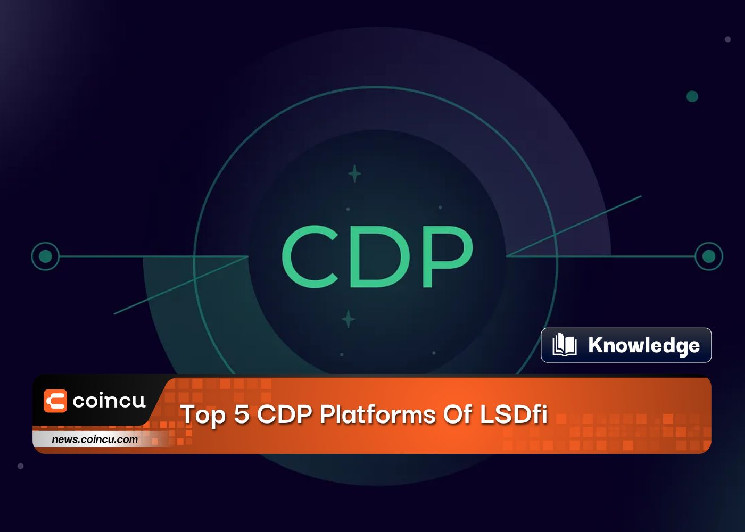What is Collateralized Debt Position (CDP)?
The CDP system is a sophisticated agreement that enables users to lock up their collateral in a secure smart contract. In return, they receive a decentralized stablecoin issued by the platform. Unlike traditional stablecoins pegged to centralized authorities, these stablecoin maintains their value by being backed by the collateral locked in the CDP.
Top 5 CDP platforms of LSDfi
MakerDAO – DAI
MakerDAO, a prominent Ethereum-based blockchain protocol, has been at the forefront of decentralized finance (DeFi) since its inception. One of its innovative creations, the Collateralized Debt Position (CDP) system, has garnered significant attention within the blockchain industry.
The mechanics of a CDP are simple yet powerful. When a user deposits collateral into the smart contract, it undergoes a process of collateralization, determining the amount of DAI they can generate. This process ensures that there is always sufficient collateral to back the circulating DAI in the ecosystem, maintaining stability and preventing wild fluctuations.
By using CDPs, users can access liquidity without the need for intermediaries like banks. This permissionless and decentralized financial system has opened up new opportunities for individuals globally, providing them with greater control over their finances.
MakerDAO’s dedication to decentralization and transparency has earned it a reputation as a pioneer in the DeFi space. As the DeFi industry continues to grow and evolve, the CDP system remains a fundamental pillar of MakerDAO’s ecosystem, contributing to the broader adoption of blockchain-based financial solutions. With the ongoing support of the DeFi community, MakerDAO and its CDP system are poised to shape the future of decentralized finance, bringing financial empowerment to individuals worldwide.
A fundamental principle of MakerDAO’s CDP system is that the value of the collateral locked must always exceed 150% of the DAI generated. This safety mechanism ensures the stability of the system and mitigates risks associated with market fluctuations. If the value of the collateral falls below the threshold due to market changes, the system automatically initiates a liquidation process. The collateral is sold off to repay the DAI loan, accompanied by a 13% liquidation penalty and 8.5% stability fees, protecting the integrity of the DAI stablecoin.
Currently, there are approximately 440 million DAI stablecoins in circulation, an impressive feat achieved through the CDP process. These DAI coins represent loans that are fully backed by the value of the collateral held in their respective CDPs, ensuring their stability and reliability.
Originally, MakerDAO’s CDPs solely accepted Ether (ETH) as collateral. However, in a move to diversify and enhance the system’s robustness, MakerDAO has expanded its accepted collateral assets. Users can now utilize a range of cryptocurrencies, including Basic Attention Token (BAT), USD Coin (USDC), Wrapped Bitcoin (WBTC), TrueUSD (TUSD), Kyber Network (KNC), 0x (ZRX), and Decentraland (MANA). This expansion not only widens the utility of the system but also opens up new possibilities for users seeking decentralized lending and stablecoin solutions.
In addition to its varied collateral options, MakerDAO also offers a decentralized stablecoin called SAI, which is backed by Ether. This further enriches the DeFi ecosystem by providing a stable alternative to the traditionally volatile cryptocurrencies.
As the pioneer of CDPs, MakerDAO has set the stage for other DeFi projects to follow suit and implement similar systems. The widespread adoption of CDPs by other projects would mark a significant step forward for DeFi, increasing accessibility to stablecoins and decentralized lending while promoting financial inclusivity and innovation.
With MakerDAO leading the way, the DeFi community eagerly anticipates the continued evolution of CDPs and the positive impact they will have on the world of decentralized finance. As the industry moves towards a more sustainable and interconnected future, MakerDAO’s groundbreaking initiatives will undoubtedly play a pivotal role in shaping the financial landscape for years to come.

Lybra Finance – eUSD
Lybra Finance empowered users to collateralize their ETH/stETH holdings to mint the platform’s stablecoin, eUSD, without incurring any fees, including loan fees. This innovative approach sets Lybra apart from its competitors, providing users with unparalleled opportunities to leverage their assets and earn passive income.
Unlike traditional CDP platforms, Lybra Finance’s unique selling proposition lies in its ability to offer eUSD as a yield-bearing asset. Simply by holding this stablecoin in their wallets, users become eligible to receive passive income in the form of the platform’s inflation token, esLBR. This revolutionary concept allows individuals to take advantage of a form of “negative-interest loans,” presenting an attractive prospect in the rapidly expanding DeFi landscape.
At the core of Lybra Finance’s offering is its straightforward process: users collateralize their ETH/stETH holdings on the platform, enabling them to mint eUSD as collateral at a value exceeding 150% (1$ eUSD backed by 1.5$ ETH). The absence of fees in this process significantly enhances the appeal of the platform, eliminating barriers to entry and fostering greater inclusivity.
Upon depositing ETH into the Lybra Finance platform, the funds are automatically converted into stETH, a move that enhances profitability and yield potential. The profit generated from stETH holdings is regularly harvested, with the proceeds then used to purchase eUSD. Subsequently, these eUSD rewards are distributed to holders in the form of a rebase, ensuring a steady stream of passive income.
The introduction of Lybra Finance has garnered immense attention and enthusiasm within the DeFi community. Its unique features empower users to take control of their financial future by unlocking the potential of their assets, all while enjoying the convenience of a fee-free ecosystem. This novel approach is set to redefine the landscape of CDP platforms and revolutionize how individuals view and interact with their crypto holdings.
As the global interest in sustainable and inclusive finance continues to grow, Lybra Finance’s commitment to fostering financial accessibility and promoting passive income opportunities holds immense promise. By providing users with an avenue to mint eUSD without fees, the platform emerges as a beacon of innovation, poised to play a pivotal role in shaping the future of DeFi.

Raft Finance – R
Positioned as a leading contender in LSDfi’s rapidly expanding landscape, Raft Finance presents a unique approach by developing a Lending & Borrowing platform based on the classic CDP model, collateralized with wstETH to mint the stablecoin R.
With the DeFi world abuzz with the likes of Lybra Finance and other LSDfi projects, Raft Finance has set its sights on becoming a prominent player in the market. By adopting a classic model of CDP (Collateralized Debt Position), the platform offers users the ability to lock up wstETH as collateral, enabling them to mint stablecoin R. This collateralization mechanism ensures stability and security, creating an opportunity for users to borrow and lend with confidence.
A core objective of Raft Finance is to establish stablecoin R as a benchmark for peg level and high liquidity within the cryptocurrency market. This ambition sets the project apart as the crypto community continues to search for stablecoins that can provide reliable value preservation and seamless trading experiences.
The emergence of Raft Finance comes amid a significant boom in the LSDfi sector, with various projects vying for attention and user adoption. However, the unique collateralization approach and stablecoin vision of Raft Finance offer a fresh perspective to the DeFi landscape.
While the project is still in its early stages, industry experts and enthusiasts alike are keeping a close eye on its development. The team behind Raft Finance has expressed unwavering dedication to transparency and community engagement, making strides to build trust among potential users and investors.

Gravita Protocol – GRAI
It appears you have provided information about Gravita Protocol, a lending and borrowing platform that utilizes Liquid Staking Tokens (LSTs) and stablecoins to mint its stablecoin, GRAI. Users can profit GRAI by providing liquidity to Stable Pools and utilizing it on other DeFi protocols.
The peg holding mechanism of GRAI is designed to maintain its value close to $1. Here’s how it works:
The goal of this mechanism is to incentivize users to maintain the value of GRAI close to its $1 peg, as arbitrage opportunities arise when the price deviates from this peg.
It’s important to note that the success of this peg holding mechanism depends on the overall liquidity and trading activity of GRAI in the market. Additionally, users should carefully assess the risks involved in collateralizing their assets and participating in the protocol. As with any DeFi platform, there are potential risks, including impermanent loss and smart contract vulnerabilities, that users should be aware of before engaging with the protocol.

Curve Finance – crvUSD
crvUSD is a decentralized Stablecoin issued by the Curve Finance protocol. Acting as a card for Curve to establish its dominance in the Stableswap arena, crvUSD is set to revolutionize the stablecoin landscape and bring forth new possibilities for the Ethereum network and beyond.
One of the key features of crvUSD is its issuance through the CDP mechanism. This approach ensures that the stablecoin is backed by secure and low-risk collateral assets, primarily including ETH and BTC. Additionally, the protocol supports a range of other assets such as wstETH and sfrxETH, with plans to integrate more Liquid staked DeFi (LST) assets, further enticing DeFi enthusiasts.
The strength of crvUSD lies in its ability to maintain a stable peg and liquidity, owing to Curve Finance’s vast user base and abundant liquidity reserves. With approximately $200 million in liquidity distributed across numerous pools, the multi-pool mechanism facilitates seamless asset swaps for users, catering to their diverse needs.
An essential aspect of the crvUSD ecosystem is the borrowing functionality it offers to users. Just like other CDP protocols, Curve allows individuals to collateralize their holdings, specifically in ETH, BTC, or wrapped assets, to mint and borrow crvUSD. However, borrowers must be mindful of the annual interest rates incurred during the borrowing process.
To ensure the safety of the system, Curve Finance employs a strategic liquidation mechanism. When a borrower’s position enters the soft liquidation mode due to a decline in asset prices within the liquidation price zone, they can only repay the loan or liquidate their position. However, if the position continues to deteriorate and reaches hard liquidation, the borrower stands to lose their entire collateral.
In the future, crvUSD aims to extend its support beyond the Ethereum network, embracing a multi-chain approach. By exploring Layer 2 solutions such as Arbitrum, Optimism, Polygon, and Zksync Era, the stablecoin seeks to widen its user base and offer enhanced scalability to its growing community.
Curve Finance’s ambitious roadmap and commitment to bolstering crvUSD’s utility and resilience are set to attract Liquid staked DeFi players and further solidify its position in the decentralized finance landscape. As the protocol continues to revolutionize the world of stablecoins, the future of crvUSD appears promising, poised to foster financial inclusion and drive the adoption of DeFi across various blockchain ecosystems.

DISCLAIMER: The information on this website is provided as general market commentary and does not constitute investment advice. We encourage you to do your research before investing.

